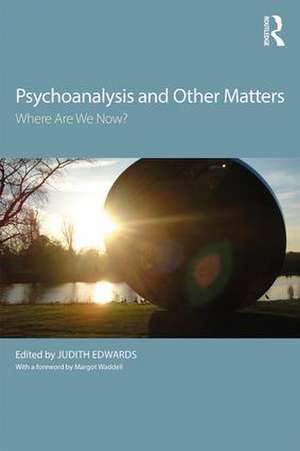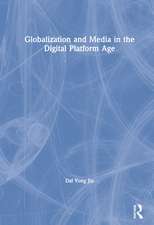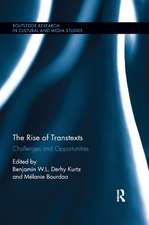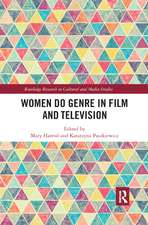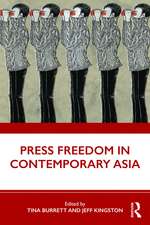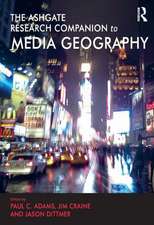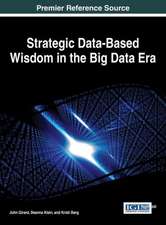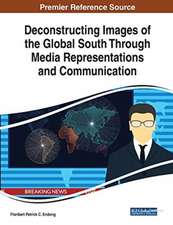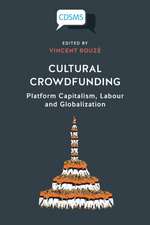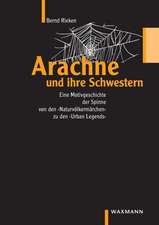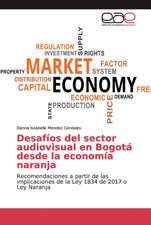Psychoanalysis and Other Matters: Where Are We Now?
Editat de Judith Edwardsen Limba Engleză Paperback – 17 iul 2019
Judith Edwards here calls upon international analysts, psychotherapists and other professionals to explore the concepts of ‘inside’ and ‘outside’ in psychoanalysis, boldly challenging existing boundaries. In this unique and ground-breaking collection, chapters are written by a mathematics professor, a sculptor, film-makers, anthropologists from Australia and Canada, an Ofsted inspector, a neuroscientist and two Chinese psychotherapists. The book emphasises the importance of listening across disciplinary lines, and crossing frontiers within psychoanalysis itself, by integrating psychoanalytic elements with poetry, music, literature, quantum physics, cultural studies and education. Edwards presents this original and global research with authority, showing us how these fields intersect and produce new understandings in us all that allow us to grow and benefit from new perspectives.
This collection is unlike no other in its interdisciplinary and international approach. It will be an essential tool for all psychoanalysts, including those in training, as well as psychotherapists and psychotherapeutically-engaged scholars. It will also be of immense interest to academics and students of interdisciplinary studies, psychosocial studies, cultural studies and film studies.
| Toate formatele și edițiile | Preț | Express |
|---|---|---|
| Paperback (1) | 334.71 lei 6-8 săpt. | |
| Taylor & Francis – 17 iul 2019 | 334.71 lei 6-8 săpt. | |
| Hardback (1) | 1095.75 lei 6-8 săpt. | |
| Taylor & Francis – 15 iul 2019 | 1095.75 lei 6-8 săpt. |
Preț: 334.71 lei
Preț vechi: 352.33 lei
-5% Nou
Puncte Express: 502
Preț estimativ în valută:
64.05€ • 67.11$ • 52.95£
64.05€ • 67.11$ • 52.95£
Carte tipărită la comandă
Livrare economică 11-25 aprilie
Preluare comenzi: 021 569.72.76
Specificații
ISBN-13: 9781138494640
ISBN-10: 113849464X
Pagini: 230
Ilustrații: 5 Line drawings, black and white; 7 Halftones, black and white; 13 Illustrations, black and white
Dimensiuni: 156 x 234 x 15 mm
Greutate: 0.36 kg
Ediția:1
Editura: Taylor & Francis
Colecția Routledge
Locul publicării:Oxford, United Kingdom
ISBN-10: 113849464X
Pagini: 230
Ilustrații: 5 Line drawings, black and white; 7 Halftones, black and white; 13 Illustrations, black and white
Dimensiuni: 156 x 234 x 15 mm
Greutate: 0.36 kg
Ediția:1
Editura: Taylor & Francis
Colecția Routledge
Locul publicării:Oxford, United Kingdom
Cuprins
Acknowledgements; Dedication; Foreword by Margot Waddell; Notes on Contributors; Introduction; Chapter 1: From Primitive Fears the the Safety of Metaphor by Josie Oppenheim; Chapter 2: Linking Mathematics to Psychoanalysis by Alfredo Moscardini; Chapter 3: Borderline Territory in Developmental Creativity by Rachael Henry; Chapter 4: Future Perfect: Some reflections on the sense of anticipations in ordinary infants and psychoanalytic work by Anne Alvarez; Chapter 5: Womba: The Yagwoia (cannibal) Complex by Jadram Mimica; Chapter 6: Body positive: Bodies, Minds, Trauma and becoming Easeful by Graham Music; Chapter 7: Matching Attunement and the Psychoanalytic Dialogue by Eric Rayner (abridged by Sarah Sutton); Chapter 8: Inside: Sculpture, anthropology and psychoanalysis; a conversation by Hugh Brody, Antony Gormley and Judith Edwards; Chapter 9: What you see is what you get: observation, as opposed to inspection, as a means of organisational change by Sarah Sutton; Chapter10: The Right Start in Life: The politics of learning and mental health in schools by Mick Megee and Lucy Alexander; Chapter 11: The Mourning Process of Ancient Chinese Women since the 11th century Song Dynasty: Cultural Influence and Universality by Dr. Ying Xue and Wing-kwong Ng; Chapter 12: Literature, psychoanalysis, chaos theory: iteration, re-iteration, recursion by Graham Shulman; Chapter 13: Looking after the Future: Conversations with Central Australian Indigenous Thinkers by Ute Eickelkamp; Chapter 14: Where are we now? How do we look and what do we see? by Judith Edwards; Index
Notă biografică
Judith Edwards, PhD, MACP, is a former child and adolescent psychotherapist based in the UK who has worked at the Tavistock Clinic since the 1980s. She has been internationally published and is a past editor of the Journal of Child Psychotherapy. Her selected papers Love the Wild Swan were published in Routledge's World Library of Mental Health series.
Recenzii
'Dr. Judith Edwards really knows how to throw an intellectual party! This remarkable book, brimming with contributions from clinicians, sculptors, film-makers, anthropologists, teachers and cyberneticians, explores the complexities of depth psychology from innumerable perspectives, and represents a true tribute to the profundity of psychoanalysis – the gift that keeps on giving. One will feel infinitely more intelligent after having read this book.' - Professor Brett Kahr, Senior Fellow at the Tavistock Institute of Medical Psychology, London; Trustee of the Freud Museum, London, UK. His books include Tea with Winnicott, Coffee with Freud and, most recently, How to Flourish as a Psychotherapist
'Judith Edwards’s work has always been marked by a wide range of cultural reference. In this volume, she brings together stimulating chapters on topics as seemingly diverse as mourning rituals in ancient China, detailed technical considerations in child psychotherapy and recursion in literature, psychoanalysis and chaos theory. All the contributors subscribe to the centrality of careful observation and, even more importantly, to that of an open mind. This collection will be essential reading for anyone concerned with the development of ideas, and will nourish the clinical imagination of practitioners.' - Maria Rhode, Emeritus Professor of Child Psychotherapy, Tavistock & Portman NHS Foundation Trust, London, UK
'This book is rooted in the practice of observation. Judith Edwards’s contributors, from a range of disciplines, address issues of how we see, and the role theory plays in seeing. In her introduction, Edwards advocates "bridges rather than walls" between psychoanalytic thinking and other fields, whereby "cross-validation of rich networks of thoughts… increases their strength and broadens our horizons". The book fulfils this promise.' - Michael Brearley, Fellow of the British Psychoanalytical Society, London, UK
'The image that came to mind when reading this book was Paul Klee’s ‘Revolving House’. The painting captures something of the spirit of this engaging and thought-provoking collection which gathers together in dynamic conversation different perspectives on the central and vitalising importance that the creative play of ‘relationships between’ plays in psychic health. These evocative essays lightly link across cultures, histories, places, bodies, therapy, science and the arts creating a deeply felt resonant weave that addresses what it means to be ‘human’. The book is a testament to the values of the ‘interdisciplinary mind’ and holding the question ‘open’.1 - Amanda Dowd, Jungian analyst, Australia and New Zealand Society of Jungian Analysts; Deputy Editor of the Journal of Analytical Psychology
'Judith Edwards’s work has always been marked by a wide range of cultural reference. In this volume, she brings together stimulating chapters on topics as seemingly diverse as mourning rituals in ancient China, detailed technical considerations in child psychotherapy and recursion in literature, psychoanalysis and chaos theory. All the contributors subscribe to the centrality of careful observation and, even more importantly, to that of an open mind. This collection will be essential reading for anyone concerned with the development of ideas, and will nourish the clinical imagination of practitioners.' - Maria Rhode, Emeritus Professor of Child Psychotherapy, Tavistock & Portman NHS Foundation Trust, London, UK
'This book is rooted in the practice of observation. Judith Edwards’s contributors, from a range of disciplines, address issues of how we see, and the role theory plays in seeing. In her introduction, Edwards advocates "bridges rather than walls" between psychoanalytic thinking and other fields, whereby "cross-validation of rich networks of thoughts… increases their strength and broadens our horizons". The book fulfils this promise.' - Michael Brearley, Fellow of the British Psychoanalytical Society, London, UK
'The image that came to mind when reading this book was Paul Klee’s ‘Revolving House’. The painting captures something of the spirit of this engaging and thought-provoking collection which gathers together in dynamic conversation different perspectives on the central and vitalising importance that the creative play of ‘relationships between’ plays in psychic health. These evocative essays lightly link across cultures, histories, places, bodies, therapy, science and the arts creating a deeply felt resonant weave that addresses what it means to be ‘human’. The book is a testament to the values of the ‘interdisciplinary mind’ and holding the question ‘open’.1 - Amanda Dowd, Jungian analyst, Australia and New Zealand Society of Jungian Analysts; Deputy Editor of the Journal of Analytical Psychology
Descriere
This innovative and interdisciplinary collection aims to broaden the way we look at and work with psychoanalytic ideas. By examining these ideas through the lenses of other disciplines, the contributors reveal what can be found when ‘boundaries’ are breached and bridges are built in psychoanalytical thought.
